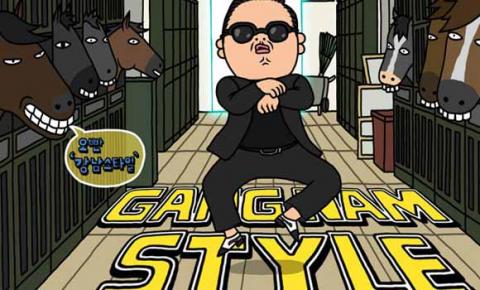It was a pleasure to work with you, as you and your team made this process a more pleasant experience for our team and the participants.

Through popularity and imitation Gangnam Style videos, created by PSY the South Korean Internet sensation, became a viral phenomena. In much the same way, many current UX patterns have gained popularity through sharing and imitation. Do you understand what are the psychological foundations of social sharing and how do things “go viral”? Mass copying and imitation of some patterns can lead to the belief in a “Best Practice” even when the pattern is proved faulty. What are the trends that we have had to fight against, and what trends do we want take off like a cheesy horse dance.
Feature Carousels Love them or hate them these have become ubiquitous in many company web sites. See our thoughts on them @ http://theusabilitypeople.com/does-name-pavlov-ring-bell-some-thoughts-f...
Horizontal scrolling Everything isn't a tablet. Forcing your desktop users to horizontal scroll because its cool is bad UX ( See the NNG post on tablet usability http://www.nngroup.com/articles/tablet-usability/ )
Responsive Design RWD is quickly becoming the scapegoat for a poorly designed port to a mobile platform. Understanding the User, their tasks, their device, and their location are more important than a jquery re-size and reconfiguring the arrangement of "blocks" from your CMS. Universal Design is the answer. See our thoughts @ http://theusabilitypeople.com/responsive-and-seven-principles-universal-...
Primary buttons, secondary links Some sites (eg. Linkedin) like to display the primary navigation as a button, and the secondary navigation as a link. Applying Fitts law, this will drive users to the primary button. Is that what you want? Perhaps!
Flat DesignThis is the latest of these trends where cool animation and a tablet style interface is presented as a substitute for a decent experience
Parallax DesignThis is another trends where cool animation and a tablet style interface is presented as a substitute for a decent experience
Some patterns that have evolved for the sake of decoration or coolness factor in the past, influence patterns of today. One example is the ubiquitous flash intro of the late 90s. This pattern has given way to the expectation of a “skip” button.
Dark patterns are often used to place desired business goals above user needs.
Patterns may be good for the business goals of the company, yet bad for the end user ; others may be good for the end user, but can be bad for the company.
Interface technology is changing at a rapid rate -- but many patterns are still held as best practices even though they are no longer applicable. If you have questions about current trends in User Experience, and how will they change the future of the web and mobile interfaces, you will have to talk to an User Experience expert. An understanding of the psychological principles behind these trends will lead to an understanding of why they happen.
Google "Social contagion" to learn about why things may go viral, and google "software human factors" to learn about the psychological principals behind good user interface design Do you have any stories, comments about design patterns that you had to use? Talk to us on twitter @UsabilityPeople
There is typically a 10 to 100 times return on investment (ROI) on resources spent on Usability and User-Centered Design. We are here to help your organization become as successful as possible. Take advantage of this ROI by contacting The Usability People today.